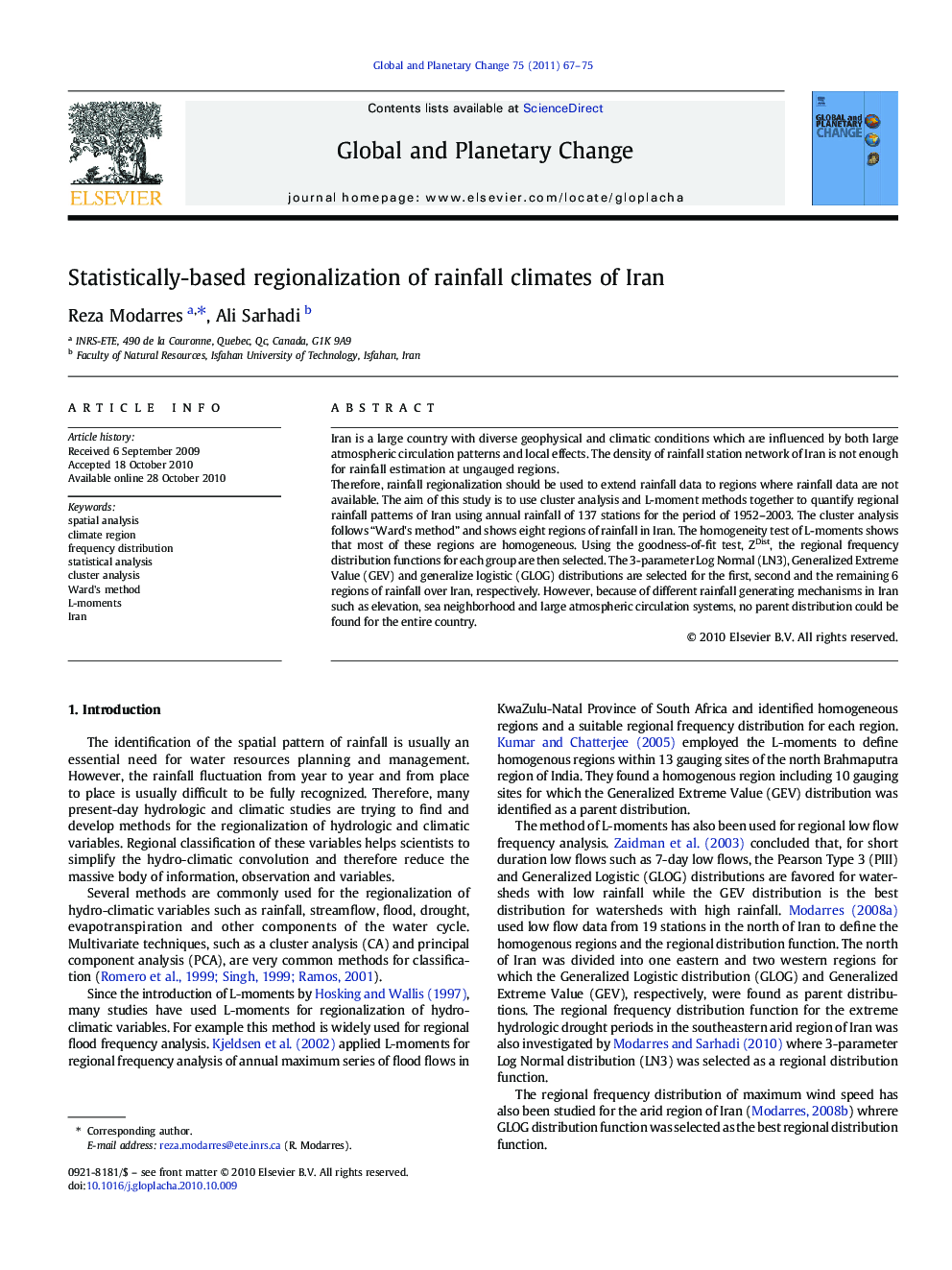| Article ID | Journal | Published Year | Pages | File Type |
|---|---|---|---|---|
| 4463906 | Global and Planetary Change | 2011 | 9 Pages |
Iran is a large country with diverse geophysical and climatic conditions which are influenced by both large atmospheric circulation patterns and local effects. The density of rainfall station network of Iran is not enough for rainfall estimation at ungauged regions.Therefore, rainfall regionalization should be used to extend rainfall data to regions where rainfall data are not available. The aim of this study is to use cluster analysis and L-moment methods together to quantify regional rainfall patterns of Iran using annual rainfall of 137 stations for the period of 1952–2003. The cluster analysis follows “Ward's method” and shows eight regions of rainfall in Iran. The homogeneity test of L-moments shows that most of these regions are homogeneous. Using the goodness-of-fit test, ZDist, the regional frequency distribution functions for each group are then selected. The 3-parameter Log Normal (LN3), Generalized Extreme Value (GEV) and generalize logistic (GLOG) distributions are selected for the first, second and the remaining 6 regions of rainfall over Iran, respectively. However, because of different rainfall generating mechanisms in Iran such as elevation, sea neighborhood and large atmospheric circulation systems, no parent distribution could be found for the entire country.
